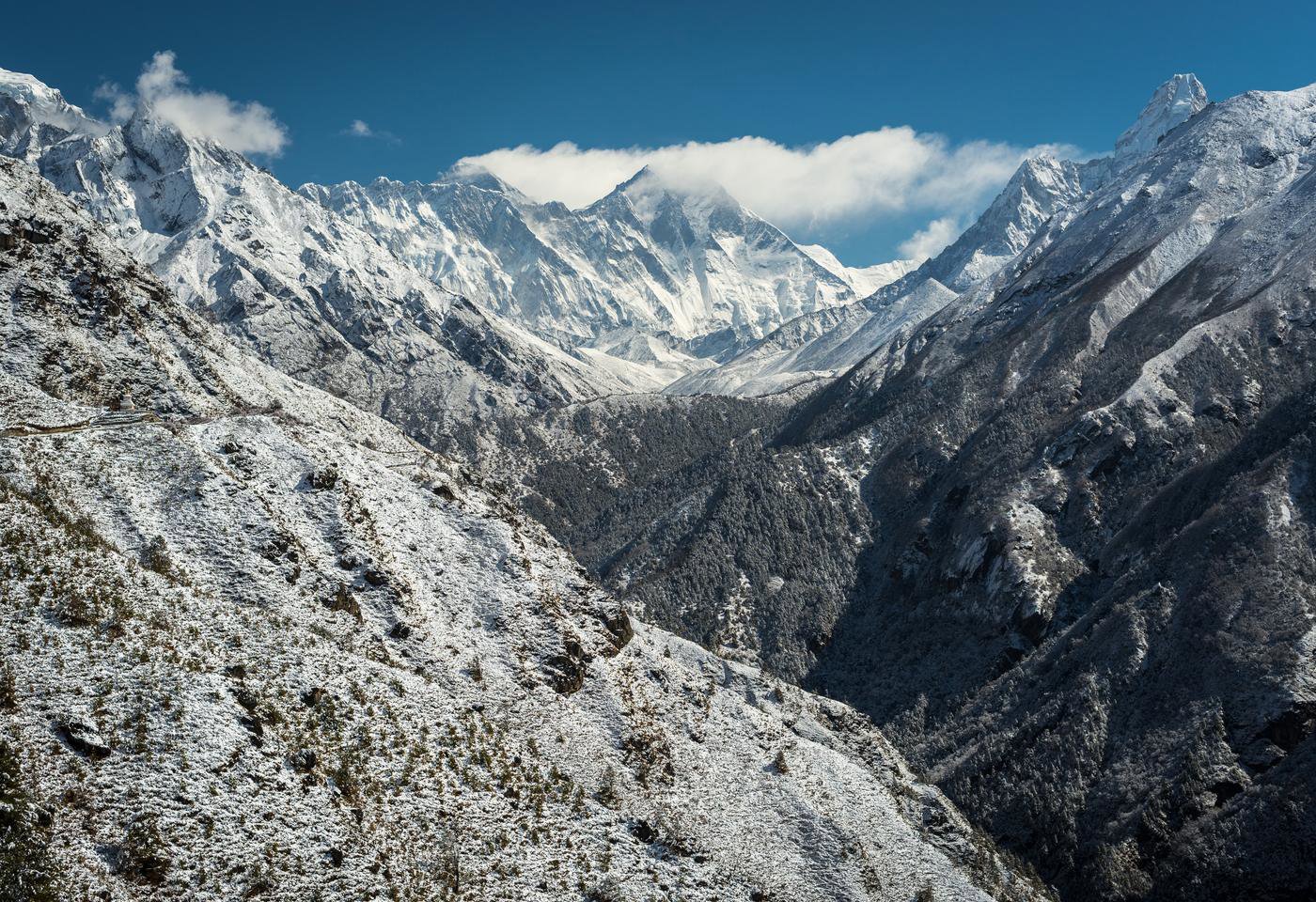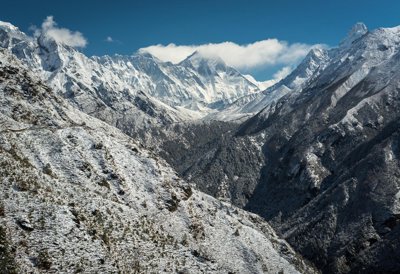Wind energy is vital in the battle against climate change, but can we make improvements to harness more from them?
Tom Heap visits Kelburn windfarm in North Ayrshire to discuss whether 'wake steering' - positioning the turbines in a different layout - could see them harness more power.
Meanwhile some potential sites are refused due to the damage caused to wildlife. Hubert Lagrange talks about his childhood obsession with bats. The creatures can detect the blades of turbines but may be unaware of the envelope of pressure surrounding them which can kill them. He's worked to develop a system to sense bat activity and allow the turbines to operate longer through a refined system.
Society Fellow Dr Tamsin Edwards discusses how much more potential there is and how much carbon could we save.
What our experts say
We asked Society Fellow Professor Michael Howland, Assistant Professor of Civil Engineering at Massachusetts Institute of Technology and Professor Nick Jenkins from Cardiff University to offer some observations on the potential of improved onshore wind turbine efficiency in reducing carbon emissions. Their points take some of the themes of the programme a step further.
 Professor Michael Howland
Professor Michael Howland
Existing commercial wind turbines are controlled as if they are completely isolated, to maximise only their own, individual power production. Instead, wake steering operates the wind farm as a collective to maximise the power production for the wind farm. Controlled experiments of wake steering at utility-scale commercial wind farms have demonstrated that wake steering (yaw misalignment) can statistically significantly increase wind farm power production for wind conditions which result in wake losses with standard individual control. There is limited published experimental data at commercial wind farms to measure the potential impact of wake steering on farm annual energy production (AEP), predominantly due to the requirement that the controlled AEP experiment would need to collect data over at least one year of wind farm operation to capture the full wind rose.
What are the limiting factors?
Professor Michael Howland
The primary limiting factor is our ability to effectively model the aerodynamics of the wind farm when wake steering is in use depending on the atmospheric conditions. The models must be accurate but also computationally efficient to enable optimisation. Further research and development in wind farm modelling and optimisation is required.
Another challenge is our ability to consistently achieve and measure AEP gains from wake steering, given the experimental noise introduced by diurnal, seasonal, and year-to-year variations in the power production of wind farms. We must quantify the uncertainty of our models and of our data collection experiments.
The potential for wake steering to increase farm power production depends strongly on the incident wind conditions, namely wind direction, wind speed, turbulence intensity, atmospheric stability, shear and veer. Wake steering power gains depend on the power lost by the yawed turbine(s) and the power gained by the downwind waked turbine(s). The power lost by a yaw misaligned turbine strongly depends on the incident wind conditions and the power gain by the waked turbine during wake steering strongly depends on the incident wind direction and the turbulence in the atmosphere. Since limited experimental data exist to measure wake steering’s impact on AEP, this potential impact is modelled using simplified aerodynamic wake models. Wake models are well-validated in wind conditions which are approximately steady.
A recent study used an aerodynamic wake model to evaluate the potential AEP impact at existing commercial wind farms in the U.S. However, wake models are uncertain, and the initial commercial experiments of the existing wake steering control strategies generally show less energy gain than the wake model prediction. Research and advancements in wake steering control methodologies (Howland et al., 2020, Doekemeijer et al., 2020, Stanfel et al., 2021) and modelling (Howland et al., 2020 and Martínez-Tossas et al., 2021) are critically needed to realise larger AEP gains.
Professor Nick Jenkins
Increasing the efficiency of wind turbines is a goal being actively pursued by all the major manufacturers and only incremental improvements are likely. The obvious way to increase the capacity of onshore wind generation is to construct more and larger turbines and in England this would require a change in planning policy.
What are the co-benefits?
 Professor Michael Howland
Professor Michael Howland
-
Our ability to reduce wake interactions through control can enable us to build denser wind farms which require less of a land (or sea) footprint. We can also use wake steering control and densify existing wind farms through repowering.
-
The value of wind power production in a decarbonised energy grid is not always equal. For example, in a grid with only wind and solar generation, we will rely on energy storage and wind energy production at night. Beyond AEP increases, our ability to increase wind power production when the winds are lower at night has a higher potential impact than the AEP increases alone would suggest.
-
Aside from increasing energy production, wake steering contributes to our ability to actively control the power production from wind farms. Wind energy has historically been viewed as 'non-dispatchable', meaning we cannot control the power produced from a wind farm the way we can control the power produced by fossil fuel generation. As wind energy produces a larger fraction of our energy, this lack of dispatchability increases the difficulty of energy system operation (having unpredictable supply meet unpredictable demand) and increases the requirements of ancillary services for grid reliability. Wake steering can help alleviate this requirement for increased ancillary services by increasing our ability to actively control wind farm power production. Through control, wind farms may also participate in providing ancillary services.
 Professor Nick Jenkins
Professor Nick Jenkins
The impact of wind turbines on birds and bats do influence the location of turbines. My understanding is that the presence of bats determines the siting of wind turbines and that, because of bats, some wind turbines are shut down in certain light wind conditions at certain times of the day and year. The anticipated loss of energy is easily calculated and would not be enormous as bats fly mainly at night and during low wind speeds when little energy can be generated.
Are there any potential negative impacts of this idea?
 Professor Michael Howland
Professor Michael Howland
-
Wake steering increases the yaw motor actuation for the wind turbines compared to standard operation. Over time, this may contribute to an increase in yaw motor maintenance costs. Wake steering control strategies must consider and balance this impact.
-
Large yaw angles can either decrease or increase the fatigue loads on wind turbines depending on the direction of yaw misalignment and the wind conditions. We must develop improved models to predict these loads.
 Professor Nick Jenkins
Professor Nick Jenkins
My understanding of wakes is that they may not be very stable onshore due to the level of mixing caused by the roughness of the ground and the atmospheric conditions. Also, the layout of onshore wind farms in the UK tends to be irregular, therefore wake steering in complex onshore terrain will be more complex compared to offshore farms with stable wakes, very regular layouts and cost pressure to reduce turbine spacings. I understand that wake steering may be important offshore where wakes persist for much longer distances and submarine cables are expensive. Similar considerations may apply to large wind farms on flat onshore terrain.
Further reading
-
Blank, T.K., and Molly, P. 2020. Hydrogens Decarbonization Impact for Industry. Near-term challenges and long-term potential. Rocky Mountain Institute
-
Burton, T., Jenkins, N., Bossanyi, E., Sharpe, D., Graham, M. 2021. Wind Energy Handbook 3rd Edition. Wiley
-
Eia. 2021. Electric Power Monthly. Table 6.07.B. Capacity Factors for Utility Scale Generators Primarily Using Non-Fossil Fuels
-
EurekAlert!. 2019. Stanford study shows how to improve production at wind farms. [online press release]
-
EurekAlert!. 2021. Wake steering potentially boosts energy production at US wind plants. [online press release]
-
Fairley, P. 2019. Algorithms Help Turbines Share the Wind Field tests affirm the energy boost long promised by optimized ‘wake steering’ of wind turbines. IEEE Spectrum
-
Gebraad, Pieter, Jared J. Thomas, Andrew Ning, Paul Fleming, and Katherine Dykes. 2017. Maximization of the annual energy production of wind power plants by optimization of layout and yaw‐based wake control. Wind Energy 20:1, pp. 97-107
-
Larter, R. 2020. Atmospheric conditions and yaw misalignment significantly impact wind turbine power production. AIP Scilight
-
Mai, Trieu T., Eric J. Lantz, Matthew Mowers, and Ryan Wiser. 2017. The value of wind technology innovation: Implications for the US power system, wind industry, electricity consumers, and environment. No. NREL/TP-6A20-70032. National Renewable Energy Lab (NREL), Golden, CO (United States).
About the series
39 Ways to Save the Planet is a new radio series by BBC Radio 4 developed in partnership with the Society and broadcast in 2021. It showcases 39 ideas to relieve the stress that climate change is placing on the Earth. In each 15 minute episode Tom Heap and Dr Tamsin Edwards meet the people behind a fresh and fascinating idea to cut the carbon.
Over the course of 2021, the Society will be producing events and digital content to accompany the series.
Episode 36: Windcatchers

Featured card image: BBC
Featured banner image: Photocreo Bednarek/Adobe Stock
The potential impact of wake steering for offshore wind turbines is anticipated to be much higher than for onshore. Offshore wind encounters lower turbulence intensity and wake steering power gains are higher for lower turbulence intensity. For example, SGRE claims they can increase offshore wind energy AEP by 1% through wake steering, although the data which may prove this claim are not publicly available.
